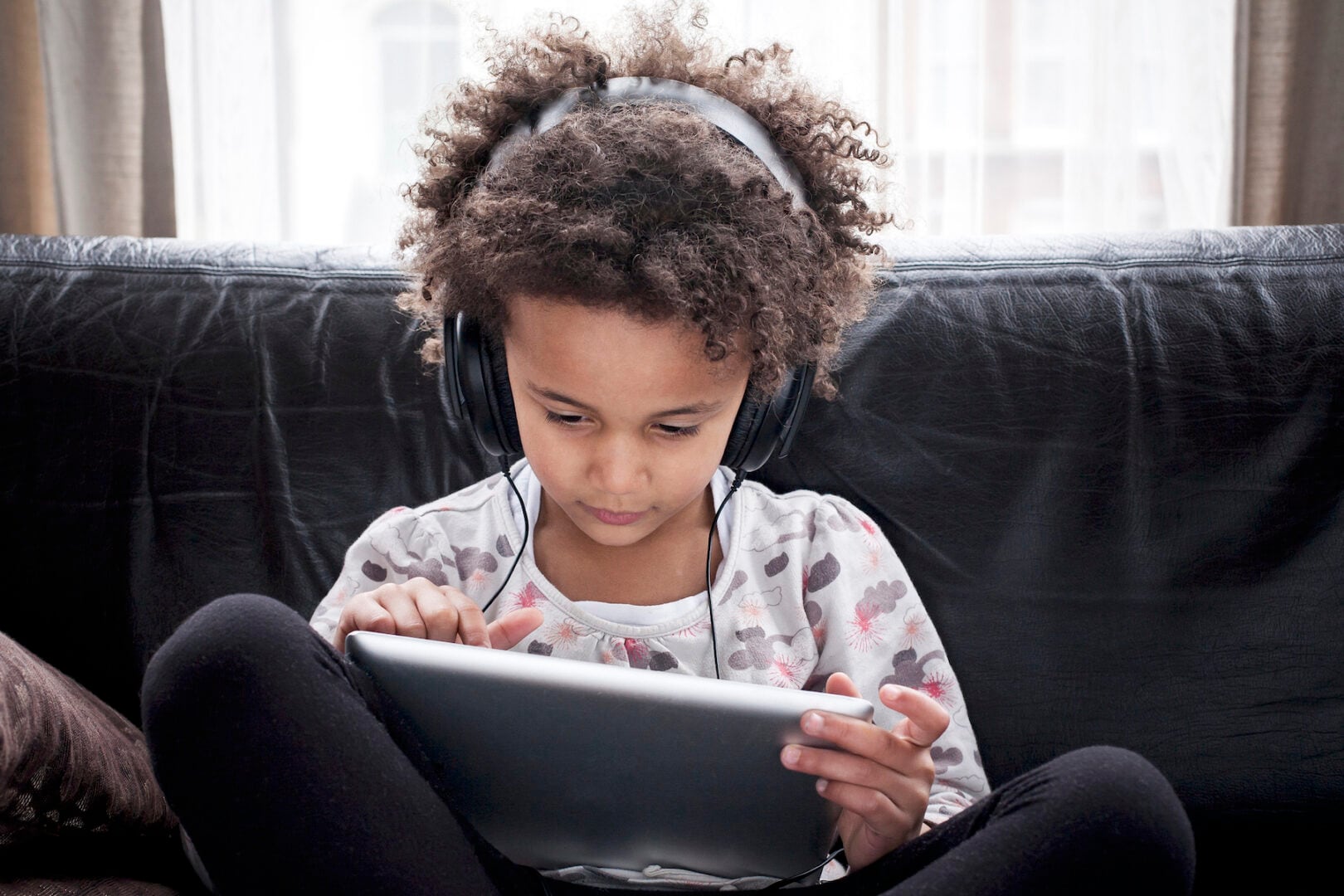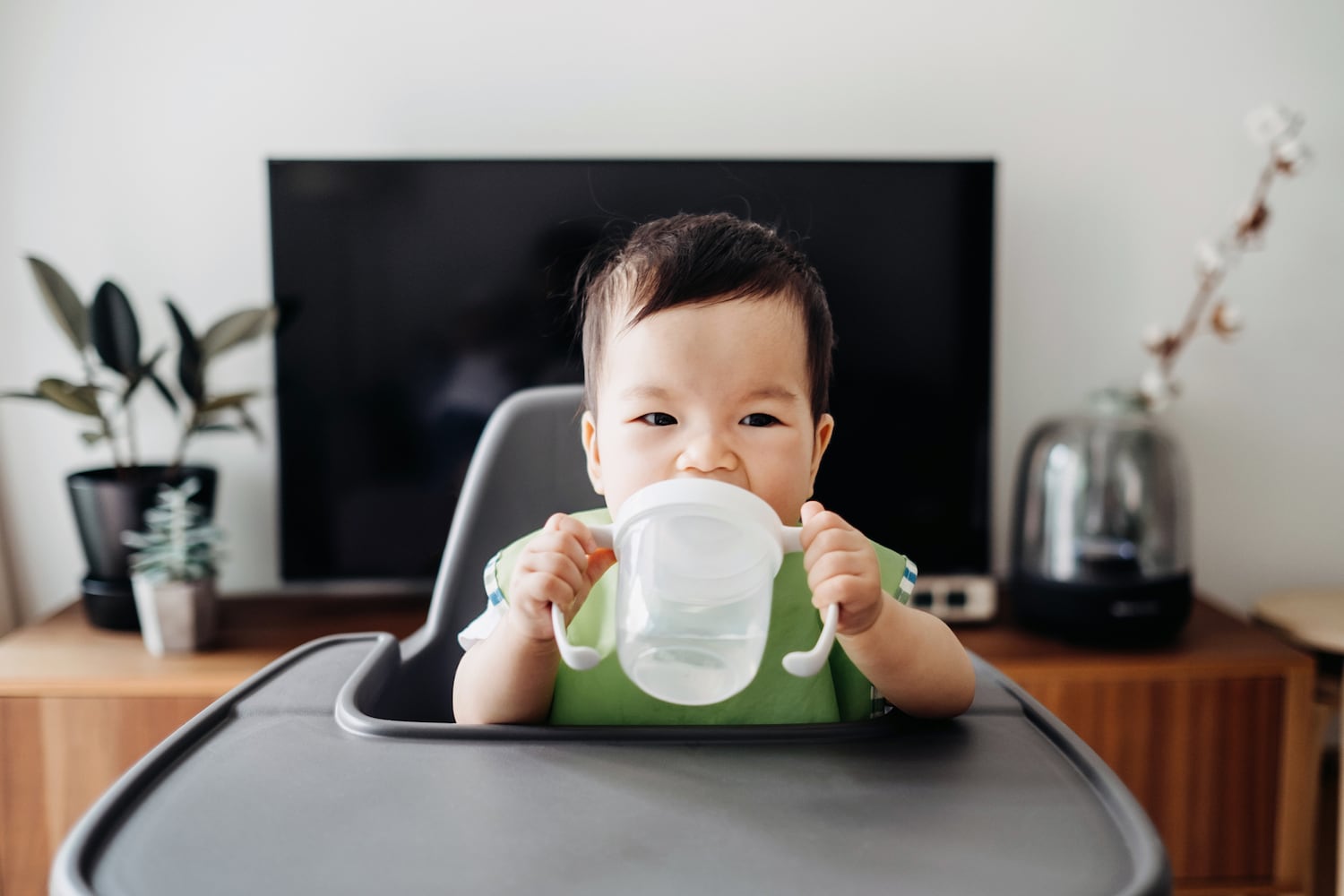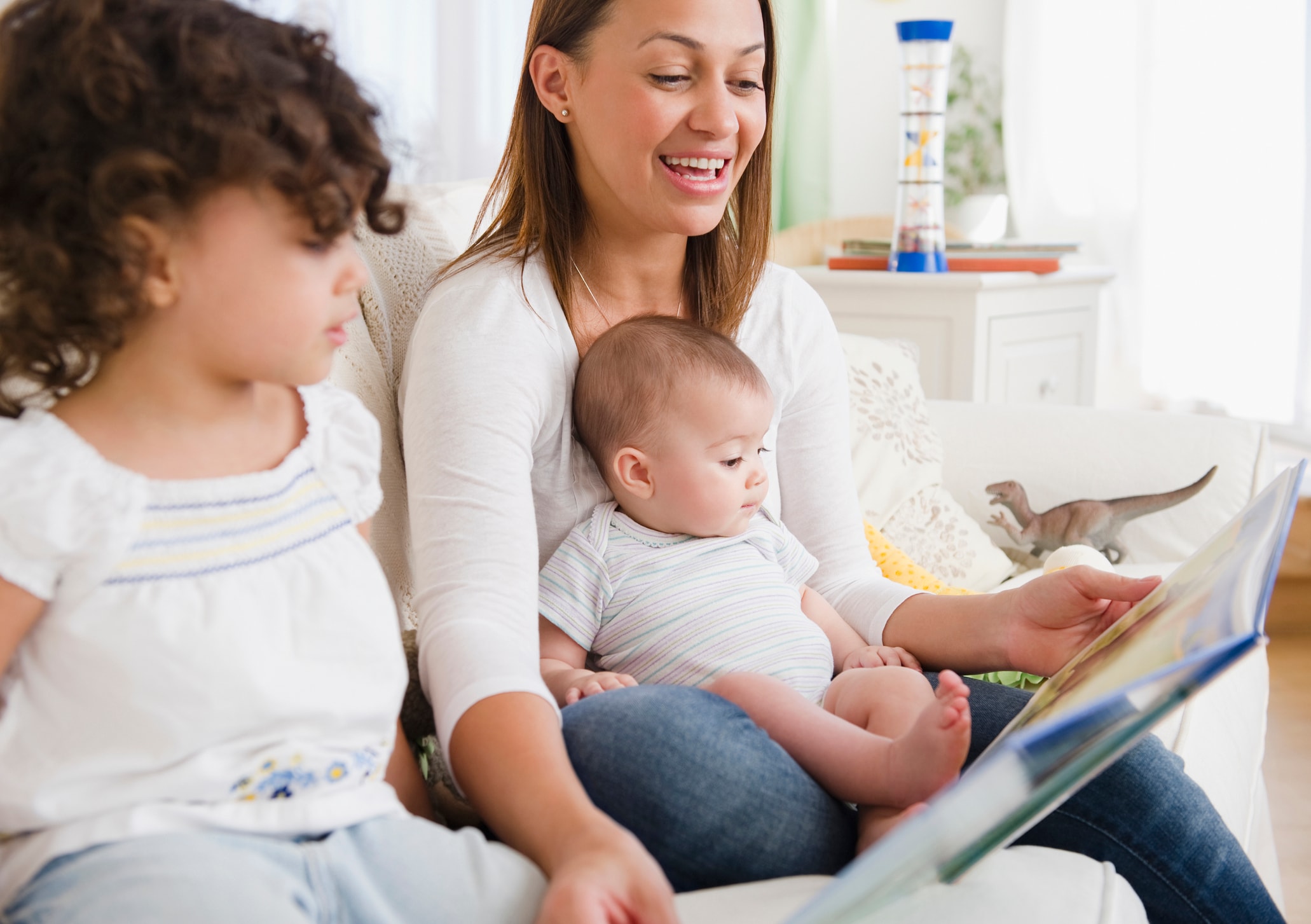Regardless of your stance on kids and screen time, there’s a good chance your child wound up consuming more media than usual in the past year. Whether your preschooler binge-watched “Peppa Pig” while you Zoomed or your older kid logged extra Minecraft hours while you made dinner (or, let’s be honest, tried to decompress from the day), everyone’s screen time has gone up recently. And pandemic notwithstanding, kids have been using devices in record numbers the past few years, leaving many parents wondering about the effects of screen time on children.
“The use of technology for communication, learning and entertainment has rapidly increased and changed how we interact and function as a society,” says Dr. Casey Hester, a pediatrician and Associate Professor at the University of Oklahoma College of Medicine. “While there are upsides to a more globally connected world, parents still have a responsibility to help kids establish healthy relationships with technology and media — even from infancy.”
Wondering how much screen time for kids is too much? Here’s what the experts have to say.
How much screen time kids should have
When it comes to children and screen time, every family is different, and there are a number of variables that contribute to what’s deemed appropriate,including the quality of the media (more on this in a bit). However, experts still recommend limiting screen time for kids aged 6 and under (and not making it a total free-for-all for older kids). Here’s an age-by-age breakdown of recommended screen time for kids.
Children younger than 18 months
According to Dr. Brandon Smith, general academic pediatrics fellow in the Department of Pediatrics at Johns Hopkins in Baltimore, children who haven’t quite hit the toddler stage should avoid screen time altogether. The one exception? The occasional video chat. “Kids younger than 18 months should only use screens to video chat with parents or family members,” Smith says. “For instance, it’s OK for kids to FaceTime with mom or dad when they’re at work or out of town.”
Children 18-24 months
“After 18 months, you can introduce some short educational videos to the mix,” Smith says, adding that once your child is 2, “you should limit their screen time to one hour per day.”
Children aged 2-5
As Smith said, once kids hit 2 years, their screen time should clock in at about one hour a day, and for the next few years, experts don’t advise increasing it. The World Health Organization (WHO) and the American Academy of Child and Adolescent Psychiatry (AACAP) recommend one hour of screen time per day for kids ages 2-5, with the AACAP saying “three hours on weekends” is OK. It also should be noted that WHO states that “less than [one hour per day] is better.”
Kids 6 and up
”After a child turns 6 years old, we don’t have a specific number limit for daily screen time,” Smith explains. “But parents and caregivers should come up with their own plans with their kids. Any screen time should be balanced with exercise and other activities that don’t rely on screens alone.”
Screen time limits by age
| Age | Daily screen time recommendation |
| 18 months and under | No screen time – Occasional video chat OK |
| 18-24 months | Short educational videos only |
| 2-5 years | 1 hour (or less) per day; 3 hours on weekends OK |
| 6 years and up | Parent guided and balanced with exercise and other activities |
The truth about screen time’s effect on kids
Screen time gets a bad rap, but it isn’t all doom and gloom. In fact, when used appropriately, it can be beneficial. For instance, a 2015 study showed that preschoolers who were randomly assigned to 20 episodes of the literacy show “Super Why!” outperformed kids who were assigned to a science show when it came to a prereading skills test, which included alphabet recognition and letter sounds. Another study showed that preschoolers who watched the PBS show “Daniel Tiger” showed “higher levels of empathy, self-efficacy and emotion recognition” than kids who didn’t watch the show — if the former group came from households where parents or caregivers consistently talked to them about their TV viewing.
However, not all forms of screen time are good, which is why experts recommend parents both limit it and be vigilant about what their kids are viewing. Here are some of the negative effects of screen time on kids:
- Slower development. “In young children, a lot of screen time can mean slower development, like learning words and learning emotions,” Smith says. “Children learn best from those in person with them, face to face, and they don’t get the same thing through screens.” Also, as AACAP points out, when older kids spend a lot of time looking at devices, they’re likely reading fewer books.
- Poor sleep. Between blue light’s ability to suppress melatonin and kids opting to look at their screens instead of going to sleep (if they have devices in their room), there’s no doubt that screen time can affect both the quantity and quality of kids’ sleep. In a 2018 review of studies examining the link between kids’ screen media use and sleep, “90% of the included studies found an association between screen time and delayed bedtime and/or decreased total sleep time.”
- Self-image issues. “As kids get older, a lot of screen time can also lead to self-image issues,” Smith says. “It’s important for parents to talk openly with older children about how they’re feeling, what’s going on in their social media feeds and why it’s important to take breaks from the screens.” In other words: You may know your child’s Instagram feed is a highlights reel, but there’s a good chance they don’t.
- Higher rates of obesity. “Higher rates of screen time are strongly associated with obesity,” Hester says. In 2019, a review of previous studies that investigated potential negative effects of screen time on kids found that higher levels of screen time were associated with a variety of health issues for kids, “with evidence strongest for adiposity [which can lead to chronic noncommunicable diseases later on in life], unhealthy diet, depressive symptoms and quality of life.”
- Higher rates of depression. “Too much screen time is also associated with depression, and can negatively impact psychosocial development,” Hester explains. A number of studies have shown that two hours or more of screen time a day correlates with depressive symptoms.
The AACAP also points out that excessive screen time usage, particularly when unmonitored, can expose kids to:
- Violence.
- Videos of stunts or challenges that may incite unsafe behavior.
- Sexual content.
- Negative stereotypes.
- Substance use.
- Cyberbullies and predators.
- Child-aimed advertising.
- Misleading or inaccurate information.
How to limit screen time for kids
It’s all but impossible to opt out of the digital world (especially for older kids), but there are ways to mitigate the risks that come with screen time and help kids have a healthier relationship with their devices. Here’s some suggestions:
Set boundaries around usage. For younger kids, try to stick to the recommended screen time limits, and determine what’s an appropriate amount of time for older kids to be on devices. “For older children who have their own phones, there are programs that parents can use to limit screen time or even time in a specific app,” Smith says. “That’s a great way to follow your child’s screen time without always asking them.”
Don’t use it as a babysitter. While it can be tempting to use a screen as a digital parent of sorts while you get a few things done, for younger kids, it’s not the best use of screen time. “If kids are given a screen to distract them or act as a babysitter, it’s not ideal,” says Smith. “Instead, use screens with your child to show them what the video means and what they can learn from the content.”
Hester recommends asking young kids questions and relating what they’re watching back to their life. “Say things like: ‘Look at the papa bear playing with his cub. I like to play outside with you like that too. What do you want to do the next time we play outside?’,” she says.
Check your screen habits. Always scrolling? Then it’s doubtful your kids will heed any anti-screen time messages you preach. “Children mimic parental behavior, so the best way to establish healthy habits is by modeling,” Hester says. “Take an honest look at your own social media use and screen time. If you are on your phone engaged in social media or watching Netflix on TV for several hours a day, your children will be inclined to do the same.”
For younger kids, Hester recommends having non-screen activities you can do together at the ready. “For toddlers and young children, keep items handy that encourage imaginative play – a dress up chest with costumes, plenty of arts and crafts materials, fort making supplies,” she says. “Be OK with the mess they make as they create and celebrate it as a sign of healthy behavior and development.”
Don’t skimp on quality. According to the non-profit Zero to Three, parents and caregivers should focus on quality, educational TV shows (and apps, if your child uses them). They recommend public television stations and outlets, such as PBSkids.org or Sesame Workshop, and consulting Common Sense Media when looking for suggestions.
When it comes to apps, opt for ones with a specific learning goal instead of ones with tons of distracting features. Also, look for media with interactive features, such as ones that invite kids to take actions or give them feedback.
Communicate expectations clearly. “Clear expectations on time and location of use, appropriate supervision, and discussion of what apps will and won’t be allowed are all important part of healthy communication between older children and their parents,” Hester says, adding that, parents should monitor older kids’ screen habits, allowing more autonomy as they earn trust.
Know what your kids are viewing. “Parents must educate themselves on what’s out there and should also be able to check their child’s phone anytime,” Hester says. “A child should never have an app on their device that parents do not know what it is and what it is used for.”
Have no-screen zones. In 2017, The New York Times named five places/situations where families should ban devices — the dinner table, the bed, reading a book, the outdoors and the car. If that seems like too much, the American Academy of Pediatrics (AAP) has a tool for creating an individual media plan that works for your family’s lifestyle. Additionally, Hester recommends going totally screen-free once in a while.
“In addition to not allowing devices at meals, consider having a screen-free night as a family once a week,” Hester says. “Play games, get outside and remind each other that talking face to face is still the best way to interact in a meaningful and rewarding way.”





